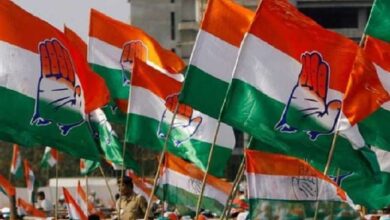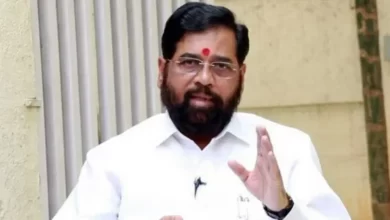Road accidents and financial burden

Road accidents are one of the major causes of death and disability in the country, at a huge socio-economic cost to the country.
Praveen Kumar
Road accidents are one of the major causes of death and disability in the country, at a huge socio-economic cost to the country. According to statistics, the loss due to road accidents in India every year is about three percent of the country’s GDP. Realizing the importance of road safety at the individual and national level, the collective efforts of all the stakeholders can bring down the road accidents and fatalities.
Roads play an important role in the development agenda of the country and in making the economy dynamic. However, roads can contribute to development only if they are safe for commuters. Every day millions of people use expressways to rural roads. Unfortunately, some of them get seriously injured or die prematurely in road accidents. In the world, India ranks first in the number of road accident deaths, followed by China and the United States. According to the Global Status Report on Road Safety, a report published by the World Health Organization in 2018, road accidents in India account for about 1.5 lakh deaths per year. Twenty-three deaths occur per one lakh population, which is about eleven percent of road accident-related deaths in the world.
National highways share 2.13 per cent of the country’s road network, but account for 29.6 per cent of the annual average road accidents and deaths from 2015 to 2019, according to the annual report published by the Ministry of Road Transport and Highways. Similarly, state highways and major district roads share three and eighty three percent of the country’s road network, respectively, while sharing 43.4 and 27 percent of annual road accident deaths. Deaths in rural road accidents are almost twice that of urban roads. In 2019, about 60 percent of road accidents and 60 percent of deaths occurred in rural areas. That is, these accidents not only cause a large number of public damages, but they also cause huge damage to the economy of the country.
The above figures are worrying because not so many people die in disasters, terrorist attacks or other conflicts, as many people lose their lives in road accidents. The difference is that the number of people killed in incidents like terrorist attacks is counted, but the figures of those who lost their lives in accidents do not bother us. According to a report of the Law Commission, if the injured are taken to the hospital or get emergency medical attention within an hour of the road accident, about fifty percent of their lives can be saved. But in the absence of awareness, many people lose their lives because the people present at the scene are hesitant to provide emergency medical care to the injured person in time for fear of legal action.
Mainly, speeding and reckless driving, disobeying traffic rules are considered to be the reasons behind road accidents. Apart from these, broken roads, uneven and mixed traffic conditions, absence of monitoring infrastructure, improper road design, poor visibility, especially at night and in foggy weather, road safety components (sign boards, road markings, crash barriers, etc.) Lack of reflectors etc.) is also a major reason for road accidents.
The number of vehicles and the length of the road network have increased significantly over the years to meet the demand for road transport. The negative side of expansion of road network, increase in the number of vehicles and urbanization in the country has come to the fore in the form of increase in road accidents. Road accidents are one of the major causes of death and disability in the country, at a huge socio-economic cost to the country. According to statistics, the loss due to road accidents in India every year is about three percent of the country’s GDP. Realizing the importance of road safety at the individual and national level, the collective efforts of all the stakeholders can bring down the road accidents and fatalities.
Schemes are being implemented by the Ministry of Road Transport and Highways at various levels to improve road safety and to create awareness about road safety among the people. Apart from these, some policy measures have been implemented under the National Road Safety Policy, such as establishment of road safety information database, infrastructure up-gradation, enforcement of safety laws etc. But still some irreverent people do not desist from their undesirable activities and endanger themselves and other people’s lives knowingly or unknowingly on the street.
People’s travel can be made easier and safer by strengthening the public transport system and through appropriate scientific evidence-based transport policies. If a person drives under the influence of alcohol, the engine of the vehicle is switched off through electronic sensors and a possible accident can be avoided. Road accidents can be curbed through notification and enforcement of mandatory use of helmets and daytime headlights by two wheeler riders. Policy formulation and enforcement for use of seat-belts for four wheeler drivers and co-travellers can save road users from falling prey to untimely. Since road safety is a collective responsibility, the government and the concerned department are required to bring about a change in their behavior as road users along with the sincere devotion to duty.
Improved medical and enforcement systems, along with road planning, design, operation and structural changes, can reduce potential road accidents and fatalities by creating road safety awareness among the general public. Road Safety Week or Road Safety Month is usually organized by the State Police Force and Transport Department in the month of January, under which awareness is spread among school and college students through various competitions, extension lectures. To make this campaign more effective, like other schemes, not only limited to a week or a month, but it has to be run for a long period.
Youth can be made aware about road safety through advertisements on social media. People can be made aware through feature film before the film starts in the cinema hall. In rural areas, folk artists can explain the importance of road safety along with issues related to social concern to rural adults and old people from the folk stage.
To make women aware, the importance of road safety can be explained through advertisement in television serial, sports competition related to road safety, song-music competition, short-drama competition etc. To create awareness about road safety and emergency services, Regional Transport Authority should put up hoardings containing road safety messages at every prominent place in the area and also pasting road safety stickers on buses, taxis, autos, which can be seen by the people. To create a sense of importance of road safety.
People can be motivated by proper encouragement to register FIR so that every small and big accident is registered in the FIR Register of the Police Department. Because analysis of road accident records helps to improve and make policy based on scientific knowledge and evidence. Considering this as a serious issue, all the stakeholders should unite and make everyone aware about the rules of road safety, only then we will be able to stop the road accidents happening in the country.
,






